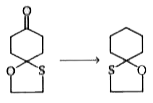Equilibrium can be achieved only in an open vessel. (T/F)
To determine whether the statement "Equilibrium can be achieved only in an open vessel" is true or false, we can analyze the concept of chemical equilibrium and the conditions under which it can be established.
1. Understanding Chemical Equilibrium:
- Chemical equilibrium occurs when the rate of the forward reaction equals the rate of the reverse reaction, resulting in constant concentrations of reactants and products over time.
2. Conditions for Equilibrium:
- For a system to reach equilibrium, it must be closed to prevent the escape or addition of reactants or products. This ensures that the concentrations of all species remain constant.
3. Open vs. Closed Vessel:
- In an open vessel, reactants or products can escape into the environment. For example, if a gas is produced in an open container, it will leave the system, preventing the establishment of equilibrium.
- In contrast, a closed vessel confines all reactants and products, allowing the reaction to reach equilibrium.
4. Example Reaction:
- Consider the reaction between hydrogen gas (H2) and iodine gas (I2) to form hydrogen iodide (HI):
H2(g)+I2(g)⇌2HI(g)
- If this reaction occurs in an open vessel, the gases can escape, and equilibrium cannot be achieved. However, if it occurs in a closed vessel, the system can reach equilibrium.
5. Conclusion:
- Since equilibrium cannot be achieved in an open vessel due to the loss of reactants or products, the statement "Equilibrium can be achieved only in an open vessel" is False.
Final Answer:
The statement is False.
- Chemical equilibrium occurs when the rate of the forward reaction equals the rate of the reverse reaction, resulting in constant concentrations of reactants and products over time.
- For a system to reach equilibrium, it must be closed to prevent the escape or addition of reactants or products. This ensures that the concentrations of all species remain constant.
- In an open vessel, reactants or products can escape into the environment. For example, if a gas is produced in an open container, it will leave the system, preventing the establishment of equilibrium.
- In contrast, a closed vessel confines all reactants and products, allowing the reaction to reach equilibrium.
- Consider the reaction between hydrogen gas (H2) and iodine gas (I2) to form hydrogen iodide (HI):
H2(g)+I2(g)⇌2HI(g)
- If this reaction occurs in an open vessel, the gases can escape, and equilibrium cannot be achieved. However, if it occurs in a closed vessel, the system can reach equilibrium.
- Since equilibrium cannot be achieved in an open vessel due to the loss of reactants or products, the statement "Equilibrium can be achieved only in an open vessel" is False.
The statement is False.
Topper's Solved these Questions
- CHEMICAL EQUILIBRIUMBOOK - CENGAGE CHEMISTRY ENGLISHCHAPTER - CHEMICAL EQUILIBRIUMEXERCISE - Archives (Multiple Correct)
6 Videos
- CHEMICAL EQUILIBRIUMBOOK - CENGAGE CHEMISTRY ENGLISHCHAPTER - CHEMICAL EQUILIBRIUMEXERCISE - Archives (Single Correct)
9 Videos
- CHEMICAL EQUILIBRIUMBOOK - CENGAGE CHEMISTRY ENGLISHCHAPTER - CHEMICAL EQUILIBRIUMEXERCISE - Exercises (Fill In The Blanks)
35 Videos
- CHEMICAL BONDING AND MOLECULAR STRUCTUREBOOK - CENGAGE CHEMISTRY ENGLISHCHAPTER - CHEMICAL BONDING AND MOLECULAR STRUCTUREEXERCISE - Archives Subjective
15 Videos
- CLASSIFICATION AND NOMENCLATURE OF ORGANIC COMPOUNDSBOOK - CENGAGE CHEMISTRY ENGLISHCHAPTER - CLASSIFICATION AND NOMENCLATURE OF ORGANIC COMPOUNDSEXERCISE - Analytical and Descriptive Type
3 Videos
Similar Questions
Knowledge Check
 this conversion can be achieved by AO3,Zn, then LiAlH4BO3/H2O2, then LiAlH4Ccold dil . KMnO4HlO4, then LiAlH4DAll of these
this conversion can be achieved by AO3,Zn, then LiAlH4BO3/H2O2, then LiAlH4Ccold dil . KMnO4HlO4, then LiAlH4DAll of these
Above conversion can be achieved byAWolf Kisher reductionBClemmensen reductionCLiAlH4DNaBH4
Above conversion can be achieved by :AWolf-Kishner reductionBClemmensen reductionCLiAlH4DNaBH4




